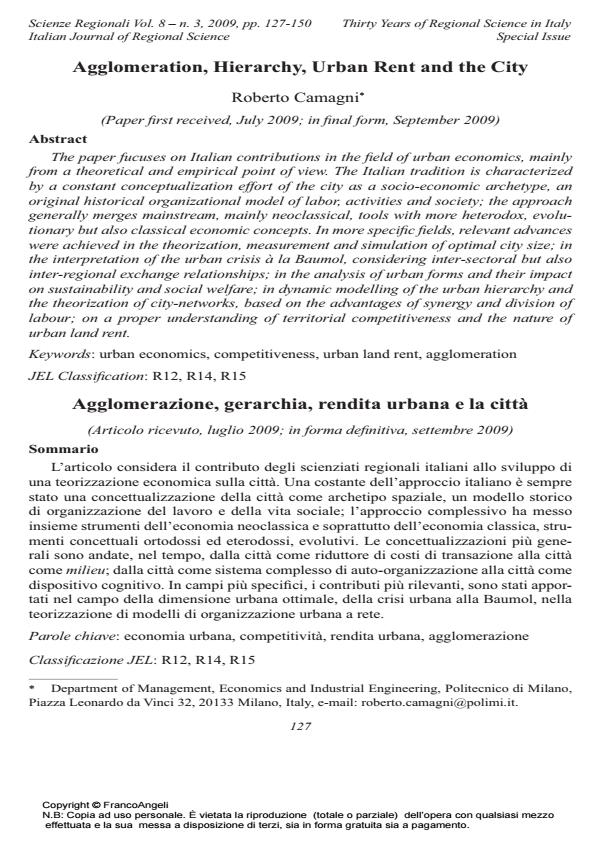Agglomeration, Hierarchy, Urban Rent and the City
Journal title SCIENZE REGIONALI
Author/s Roberto Camagni
Publishing Year 2009 Issue 2009/3
Language English Pages 24 P. 127-150 File size 346 KB
DOI 10.3280/SCRE2009-003007
DOI is like a bar code for intellectual property: to have more infomation
click here
Below, you can see the article first page
If you want to buy this article in PDF format, you can do it, following the instructions to buy download credits

FrancoAngeli is member of Publishers International Linking Association, Inc (PILA), a not-for-profit association which run the CrossRef service enabling links to and from online scholarly content.
<em>Agglomeration, Hierarchy, Urban Rent and the City</em> - (Paper first received, July 2009; in final form, September 2009) The paper fucuses on Italian contributions in the field of urban economics, mainly from a theoretical and empirical point of view. The Italian tradition is characterized by a constant conceptualization effort of the city as a socio-economic archetype, an original historical organizational model of labor, activities and society; the approach generally merges mainstream, mainly neoclassical, tools with more heterodox, evolutionary but also classical economic concepts. In more specific fields, relevant advances were achieved in the theorization, measurement and simulation of optimal city size; in the interpretation of the urban crisis à la Baumol, considering inter-sectoral but also inter-regional exchange relationships; in the analysis of urban forms and their impact on sustainability and social welfare; in dynamic modelling of the urban hierarchy and the theorization of city-networks, based on the advantages of synergy and division of labour; on a proper understanding of territorial competitiveness and the nature of urban land rent. <br/><br/>Keywords: urban economics, competitiveness, urban land rent, agglomeration <br/><br/>JEL Classification: R12, R14, R15
Roberto Camagni, Agglomeration, Hierarchy, Urban Rent and the City in "SCIENZE REGIONALI " 3/2009, pp 127-150, DOI: 10.3280/SCRE2009-003007